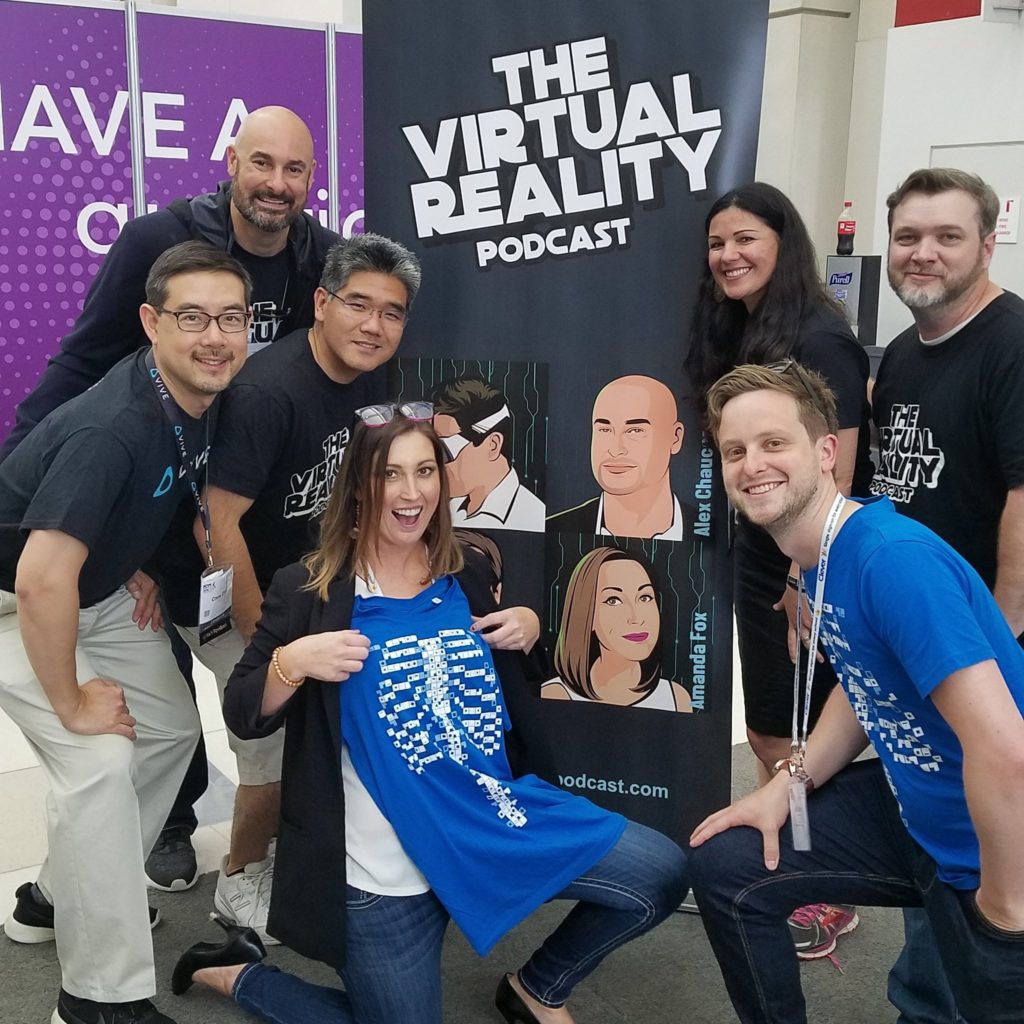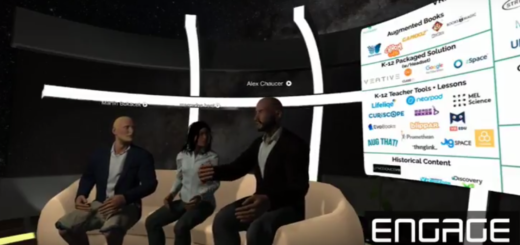Immersive Learning and Thoughts about ISTE 2018 #ISTE18
The International Society for Technology in Education Conference & Expo (ISTE) took place from June 24-27th 2018 in Chicago, IL. I had the pleasure of attending for the first time, and it didn’t disappoint. Here is a brief overview of my experience and some of the immersive technology that I observed.

Conference Summary
- Great overall conference, and massive in scale. Lots of sessions, speakers, exhibitors to explore. I had some good tour guides to help me make my way through my time there, and that was sooo helpful. Otherwise I would have been overwhelmed. Is this the largest educational technology conference in North America?
- At a very high level, there appeared to be an overall theme of enabling students to create – from keynotes to immersive technology conversations to the makerspaces. Student creation was a major theme.
- Another trend I noticed was companies with VR solutions implementing more simple to use augmented reality solutions geared towards education. More on this further down in the post..
- I came to the conference expecting to see some immersive technology, I was blown away by the presence of virtual reality technology and to a lesser degree, augmented reality at the conference. I spent the majority of my time interacting with virtual reality technology, teachers, and exhibitors.
The Conference Itself
ISTE 2018 was extremely well-organized. Chicago was an easy city to navigate; I specifically relied on Lyft for my ground transportation. I didn’t stay at the conference hotel since I had family in town to stay with. For those not familiar with ISTE, here are some stats to give you a feel for it…
- ISTE received over 3,380 submissions this year.
- They accepted 1,003 of those. This represents an overall acceptance rate of 29.6%.
- Posters had the highest acceptance rate: 426 out of 753 posters were accepted.
- Interactive lectures had the lowest acceptance rate, only 110 out of 735 interactive lectures were accepted.
- It was projected that 15,000 people would attend ISTE in Chicago this year (Last year was 15,303 in San Antonio.)
- 78% of attendees are coming from K-12 school districts and schools, while only 5% of attendees are from colleges/university. 6% of attendees are from corporations.
- 69% of attendees are from public schools, while 15% are from private/independent schools.
The primary job roles of attendees are outlined in the following graphic:
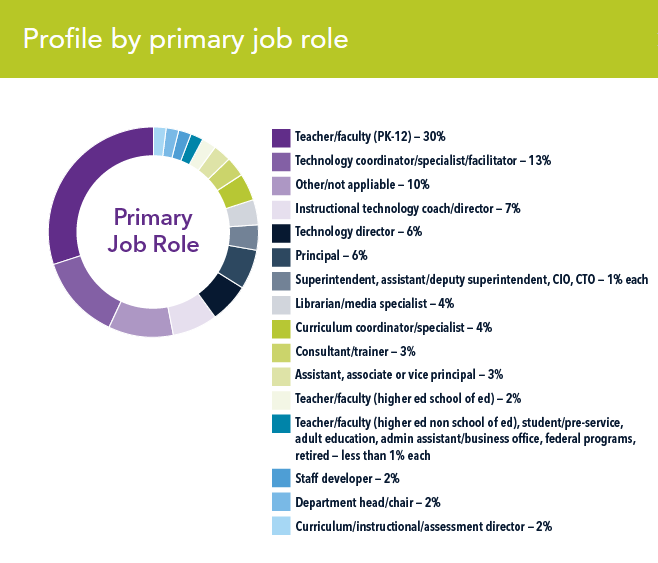
I found this breakdown the most interesting, as it shows the diversity of composition at the conference, but also that the conference is dominated by teachers and tech leaders. Teachers (30%), Technology Coordinators (13%) and Instructional Technology Leaders (7%) make of half of all attendees at ISTE.
While I have a diverse background in technology teaching and leadership, my main role at the conference was as part of a new podcast project that I co-founded with a group of amazing educators called The Virtual Reality Podcast. My background is unique in that I have 10 years of experience in higher education as an instructional technologist, but I also have my Earth Science teacher certification in NYS and I have taught at the community college under a NASA grant. I came to ISTE with an open mind, and ready to take it all in.
What I liked the most about ISTE
I really enjoyed the networking the most. Whether catching up with my Personal Learning Network (PLN) at the conference, connecting with vendors, or talking at a social event, the networking was my favorite part.
About a year ago I started a twitter chat called #VREDUchat (focused on virtual reality in education), and through those weekly interactions, I met some amazing educators across the county who also had a passion for immersive technology. This evolved into The Virtual Reality Podcast. After recording twelve episodes completely virtually, we concluded the podcast’s first season. A huge highlight for me was when I finally got to meet in person my podcast Co-founders, Amanda Fox, James McCrary, and Steven Sato! Getting to hang with them in person was a main highlight of the conference for me.
Additionally, meeting so many other amazing educators and corporate partners doing work in immersion tech. Specifically, it was so amazing meeting Kevin “Selfie King of Chicago” Chaja of EQtainment, Jaime Donally, who was promoting her new book “Learning Transported,” Rachelle Dene Poth, Azine Davoudzadeh from XRedu.tech, all the folks from Cospaces Edu, Jeremy Kenisky of MergeVR, the amazing team from Genius Plaza, VictoryVR, Chris Chin from HTC Vive, Microsoft, Google, and the list goes on and on….
As I’ve said before…technology is all about people. So thankful to connect in real life with all these folks!
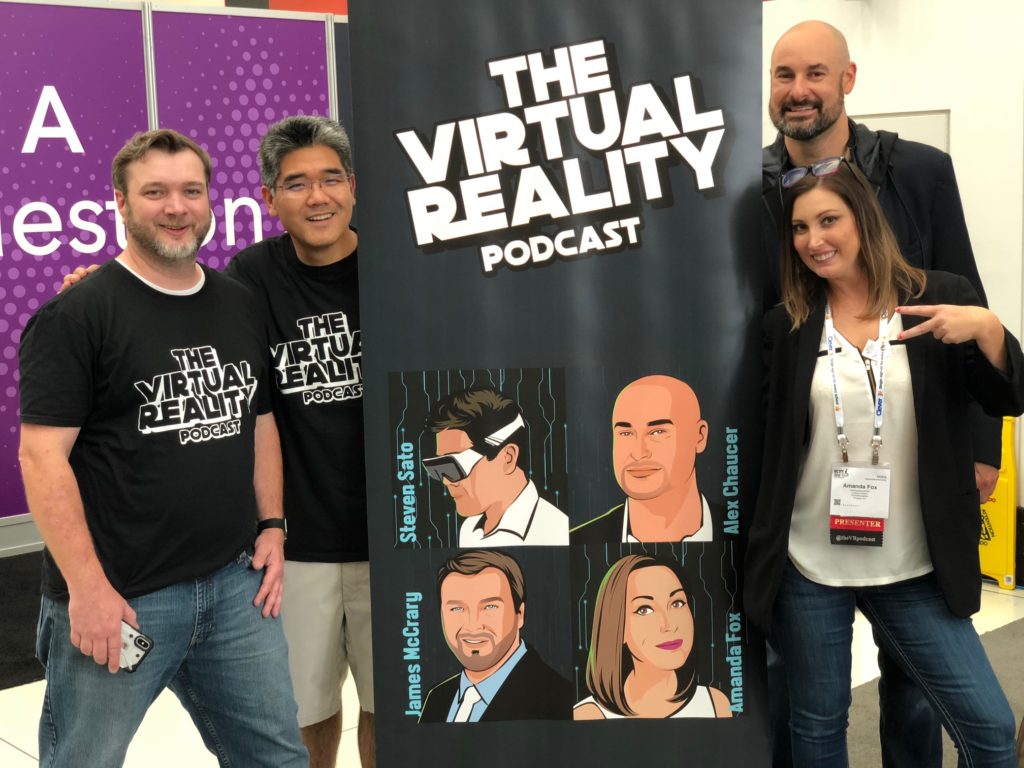
Top 7 Virtual Reality Highlights from ISTE
First of all, just seeing Immersive Technology highlighted on the stairs as you walk into ISTE showed that there was a big push in Immersive Technology at the conference. The stairs didn’t lie! Here they are, the top 7 virtual reality highlights I saw at ISTE:
Honorable Mention: I spent all of Monday in the Ready Player 101 Playground. It was great seeing so many people experience Virtual Reality and Augmented Reality for the first time in the playground, as they checked out the products from MERGE VR, Google Daydream on the Lenovo Mirage Solo, and Facebook’s Oculus Go. This included a whole class of students from Mexico!
Number 7: Genius Plaza showcased the new GeniusXR products geared toward early childhood and ESL learners. They also have a VR 360 careers exploration tool which helps to expose students to unique career paths and let’s them experience what those careers might look like in VR through on site interviews with professionals.
Number 6: Microsoft EDU revealed a virtual reality reading solution geared towards children with ADHD and for ESL learners.
Number 5: Zspace revealed laptops that support their VR/AR solution. This will add flexibility to their vivid product offering.
Number 4: VictoryVR highlighted an NGSS standards aligned Virtual Reality Science Curriculum. As an Earth Science teaching…I really want to get in there and check out this content.
Number 3: The Unity booth had an HTC Vive Focus (currently only available for sale in China) for everyone to try. Unity is also highlighting some new education programs for learning how to be an AR/VR developer.
Number 2: Google announced Augmented Reality was coming to Google Expeditions, allowing multiple people to view 3D objects being controlled by the teacher. Exciting development.
Number 1: Being there to hear Cospaces Edu announce their support for Augmented Reality was a huge highlight. Not only that, but full Merge Cube support went live! Students can now use Cospaces Edu to develop content for the AR Merge Cube from MergeVR!
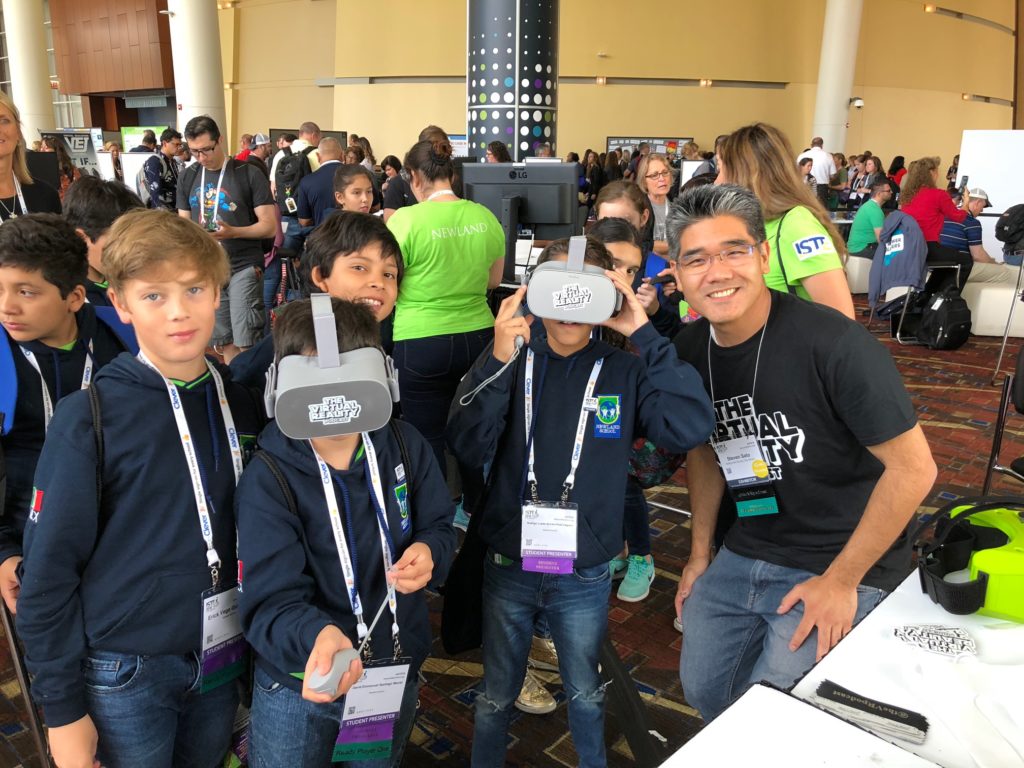
The Giveaways
Being part of the Virtual Reality Podcast team has it’s privileges. We were able to empower educators interested in immersive learning with some amazing giveaways at the conference. We gave out some sweet t-shirts and stickers. Additionally, some great companies donated some gear for us to giveaway. Big thanks to the following vendors:
- HTC Vive (donated a Vive)
- Cospaces Edu (donated an Oculus Go)
- Rumii (donated thirty classroom seats of their virtual reality classroom solution for a year)
- Lifelique
- EQtainment-(donated MergeCubes)
Thank you to all the vendors who helped bring immersion tech excitement to ISTE18.

Looking Forward
- It’s clear that immersion tech interest is growing in the education space. One person who was interviewed by TheVRPodcast commented that this was the largest VR conference they had ever seen, and it all happened within an education technology conference!
- Virtual and augmented reality vendors, like Cospaces Edu and Merge VR, who I spoke with who were at last year’s ISTE conference, commented that they enjoyed hearing from educators who were using the solutions in the classroom, getting feedback, and enjoyed connecting with teachers face-to-face. It’s clear to me that adoption is starting in K-12 based on their comments, but we are still at the early stages.
- Given that we are seeing more and more solutions being developed, in both VR and AR, it’s clear that educators will need to continue to look to their PLN and conferences like ISTE for guidance towards new solutions, best practices, how to incorporate them into teaching. Of course, you can always check out thevirtualrealitypodcast.com to hear educators following the trends in immersion tech, interviewing teacher leaders, and company CEO’s about new and upcoming solutions in VR and education.
So what were your thoughts and takeaways from #ISTE18 relating to Immersive Learning? Leave a comment here, or find us on social media at @theVRpodcast and at hashtag #VRpodcast. We’d love to hear from you!
Until next time…
